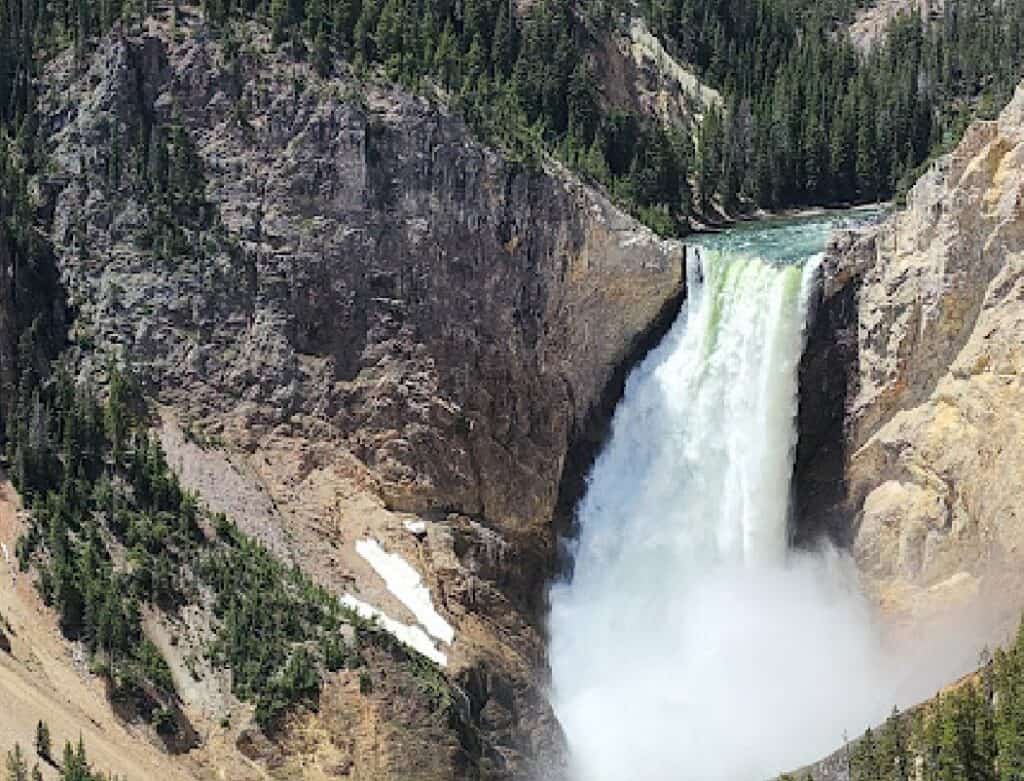Yellowstone National Park, established in 1872, is renowned as the world’s first national park. It spans over 2.2 million acres across Wyoming, Montana, and Idaho, offering a unique blend of geothermal features, diverse ecosystems, and a rich cultural history.
Established
March 1, 1872
Location
Primarily in Wyoming, extending into Montana and Idaho, United States
Area
2,219,791 acres (8,983.18 km²)

Geography and Geology
Yellowstone is situated atop a volcanic hotspot, resulting in one of the world’s largest calderas, measuring approximately 45 by 30 miles. The park is famous for its geothermal features, including more than 500 active geysers, with Old Faithful being the most iconic. The park’s landscape is shaped by its volcanic activity, with frequent seismic activity and numerous hydrothermal features.
Wildlife and Vegetation
The park is home to a diverse array of wildlife, including 67 species of mammals such as grizzly bears and bison, as well as 285 species of birds. Its vegetation is dominated by lodgepole pine forests, with more than 1,000 species of native flowering plants.
Cultural and Historical Significance
Yellowstone has been inhabited for over 11,000 years, with 27 Native American tribes having historical ties to the region. The park’s establishment marked a significant step in conservation, setting a precedent for the creation of national parks worldwide.
Visitor Experience
Yellowstone offers a wide range of activities throughout the year. In summer, visitors can explore nearly 1,000 miles of hiking trails, view wildlife, and visit geothermal features like the Grand Prismatic Spring. Winter transforms the park into a snowy wonderland, ideal for snowshoeing and guided snowmobile tours.
Must-See Attractions
- Old Faithful: This geyser erupts approximately every 90 minutes, reaching heights of 130-180 feet.
- Grand Prismatic Spring: The largest hot spring in the U.S., known for its vibrant colors.
- Yellowstone Lake: Yellowstone Lake is the largest high-elevation lake in North America, offering boating and wildlife viewing opportunities.
- Grand Canyon of the Yellowstone: A stunning canyon with impressive waterfalls and hiking trails.
- Hayden Valley: A prime location for wildlife viewin
Lodging and Facilities
Yellowstone provides a variety of lodging options, including nine lodges and numerous campgrounds. The Old Faithful Inn is one of the most famous accommodations within the park. Lodging is available from late spring through fall, with limited options in winter.
Planning Your Visit
The park is accessible year-round, with five entrances connecting to the Grand Loop Road, a central highway that facilitates exploration. Visitors should be prepared for variable weather conditions, as the park’s high elevation can lead to sudden changes in temperature and precipitation. Entrance fees and permits are required for certain activities, such as fishing.Yellowstone National Park remains a testament to natural beauty and conservation, offering visitors an unparalleled experience of America’s wilderness and geological wonders.
What are the best times of year to visit Yellowstone
The best time to visit Yellowstone National Park depends on what you want to experience, as each season offers unique opportunities and challenges.
Summer (Mid-June to Mid-September)
- Pros: This is the peak season when the weather is warm, and all roads and facilities are open. Visitors can explore the park fully, participate in a wide range of activities, and enjoy the vibrant landscapes.
- Cons: It is the busiest time, with large crowds and higher accommodation prices.
Spring (Late March to May)
- Pros: Spring offers the chance to see baby animals and fewer crowds. Wildlife such as bears are more visible as they emerge from hibernation.
- Cons: The weather can be unpredictable, with muddy conditions and many roads and facilities still closed.
Fall (Late September to Early October)
- Pros: Fall is quieter than summer, with beautiful foliage and the elk rutting season. The weather is generally pleasant, and most park areas are still accessible.
- Cons: Some facilities and roads begin to close in October, and the weather can be unpredictable.
Winter (Mid-December to February)
- Pros: Winter offers a magical experience with snowy landscapes, fewer visitors, and unique activities like snowshoeing and snowmobiling.
- Cons: Many roads and facilities are closed, requiring over snow travel for access to certain areas. Planning is essential.
For those looking to avoid the biggest crowds while still enjoying the park’s offerings, late May and late September to early October are ideal times to visit. These periods offer good weather and accessibility with fewer visitors compared to the peak summer months.
What are the best months to see wildlife in Yellowstone?
The best months to see wildlife in Yellowstone National Park are during the spring, particularly in May and early June. During this time, bears emerge from hibernation, and many animals, including bison, moose, and deer, give birth to their young, making it an excellent period for observing newborn wildlife.
Spring is also a great time for birdwatching, as many migratory birds return to the park. Additionally, cooler temperatures during this season tend to make wildlife more active. While spring offers abundant wildlife viewing opportunities, late September through early October is another good time to visit, especially for observing the elk rutting season when male elk are often seen bugling and competing for mates. Winter is ideal for spotting wolves and bison, as animals tend to move to lower elevations and are more visible against the snowy backdrop.
Tips for exploring Yellowstone National Park
Exploring Yellowstone National Park can be a rewarding and unforgettable experience, but it’s important to be prepared and informed to make the most of your visit. Here are some tips to help you navigate the park with ease and safety:
- Plan your route and activities in advance: Yellowstone is a vast and complex park, so it’s essential to have a plan in place to make the most of your time. Research the park’s various attractions, trails, and wildlife viewing areas, and prioritize the must-see destinations based on your interests and time constraints.
- Pack the right gear: Yellowstone’s weather can be unpredictable, so it’s important to pack layers of clothing, sturdy hiking boots, and rain gear. Additionally, bring plenty of water, snacks, and sun protection to keep you comfortable and hydrated throughout your adventures.
- Stay on designated trails and paths: Yellowstone’s landscape is fragile, and it’s crucial to respect the park’s natural resources by staying on designated trails and paths. Venturing off-trail can damage delicate ecosystems and put you at risk of encountering dangerous wildlife.
- Observe wildlife from a safe distance: Yellowstone is home to a diverse array of wildlife, including iconic species like the grizzly bear and the gray wolf. While it’s tempting to get close to these animals, it’s essential to maintain a safe distance and avoid approaching or feeding them. Observe wildlife from a safe vantage point and follow all park regulations and guidelines.
- Be prepared for crowds: Yellowstone is a popular destination, and during peak season, you may encounter large crowds at the park’s most famous attractions. Plan your visits to these sites early in the day or during off-peak hours to avoid the busiest times and enjoy a more peaceful experience.
By following these tips and being mindful of your surroundings, you can ensure a safe and enjoyable exploration of Yellowstone National Park, immersing yourself in the wonder and beauty of this natural masterpiece.
